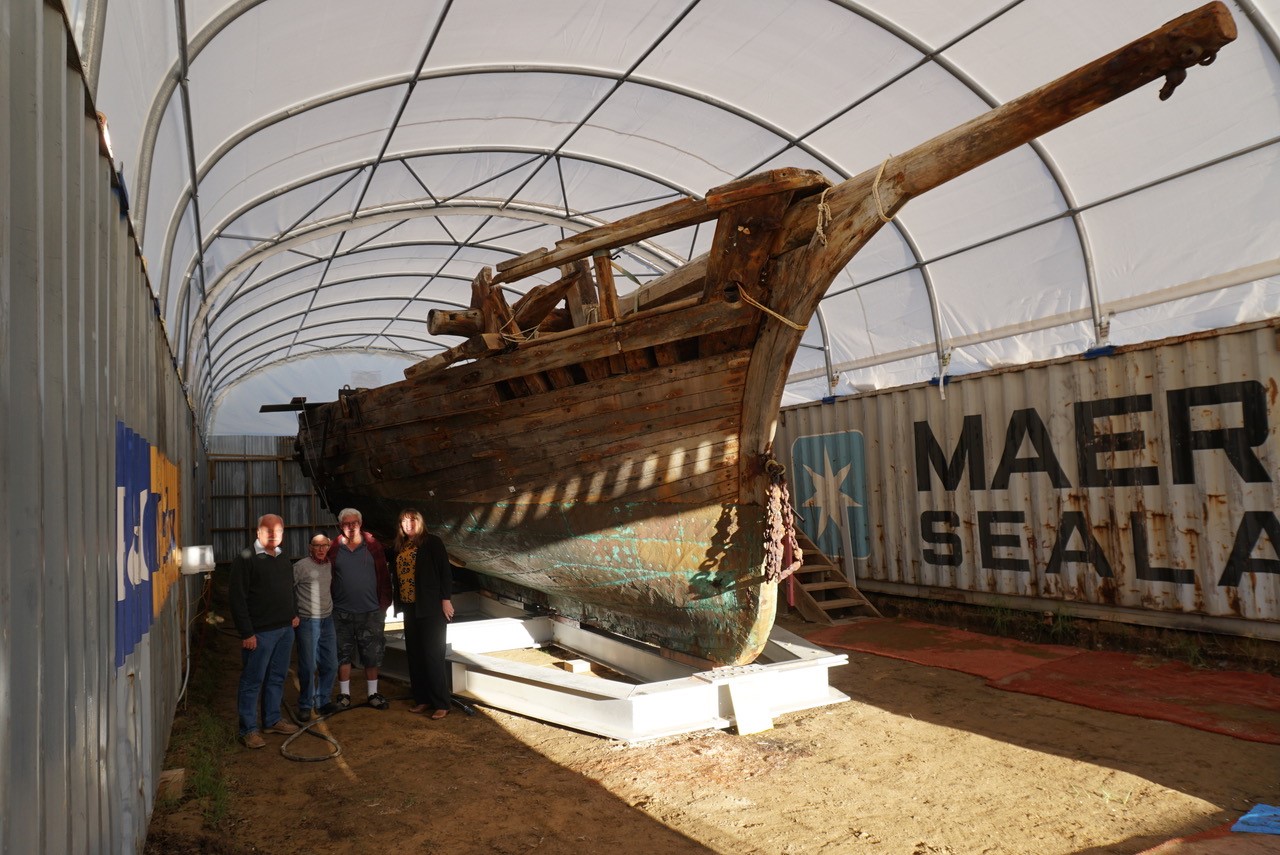The ACA NZ Branch AGM 2022 was held in New Plymouth in April, followed by a technical presentation by Taranaki division committee member Susanne Rawson of Heritage Preservation & Field Support Solutions. Entitled Heritage Conservation of Metals in Aotearoa New Zealand: Case Studies, the talk was held in person and broadcast online via Zoom.
Susanne’s talk ran through some of the interesting projects she has managed and been involved with throughout her career. These include the H.L. Hunley, which in 1864 became the first submarine to sink an enemy ship. Raised from the seafloor in 2000 the Hunley was inspected and cleaned up for preservation and is preserved in a water tank.
The USS Monitor was an early ironclad warship and one of the first with a rotating gun turret. In 2002 the turret and other parts of the Monitor were raised from the seafloor. The Turret is preserved in a water tank with cathodic protection applied to it. The conservators had wanted to remove some of the 8 layers of iron plates to clean out the salt and other corrodents that would have leached in but did not due to concerns that the plates would spring back to their original shape.
The Daring wrecked near the south head of Kaipara Harbour in 1865 in a storm. After discovery in shifting sands in 2017 the ship was removed and preserved by a charitable trust and is now in Mangawhai, where it was originally built (see more details here). Many challenges are being overcome to preserve what remains. The Daring has a kauri hull, originally clad with Muntz metal, (a copper/zinc alloy) to protect from ship-worm. The kauri hull has been found to be in relatively good condition, the pohutakawa structure is not as good. Conservators are concerned about iron oxide leaching into the wood and catalysing sulphur into sulphuric acid. The ship is being kept wet to preserve its wood structure while decisions are made on permanent preservation. Susanne asked for the audience’s opinion on options for preserving the ship.
In Antarctica Susanne worked on Captain Scott’s hut, and Shackleton’s Cape Royds huts, which being near the shore are affected by chlorides, and preservation is made difficult due to the remote location.
In NZ Susanne has also worked on preservation of cannons, including one at Founders Heritage Park in Nelson that is thought to be the old time cannon for Nelson’s port. Preservation has been hampered by uncertainties about its history. One older resident does remember it as the time-cannon, and also recalls children being allowed to stuff it with rags and firing it – one group getting in trouble for adding rocks and breaking several nearby windows. Susanne led a discussion on options for removing the existing, non-original, coating and replacing it with an appropriate permanent coating.
Event Images




Submitted by Mark Sigley